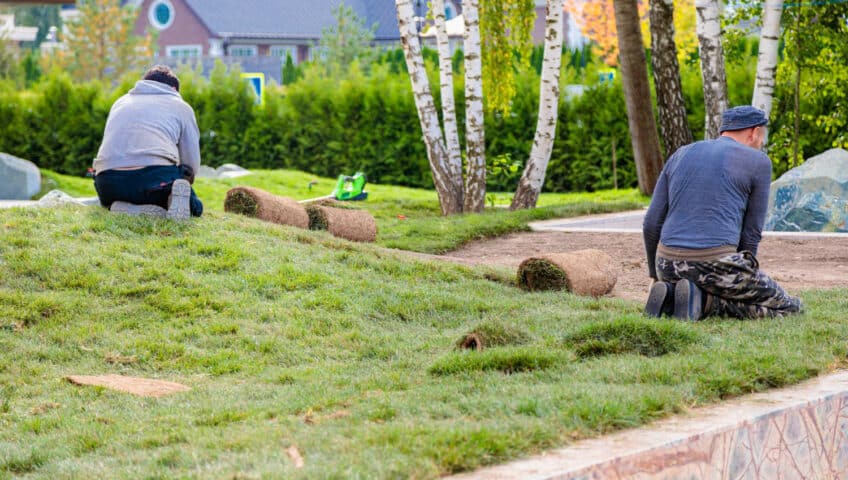Preparing the foundation is a critical step in any construction project, especially when dealing with large buildings. A strong and well-prepared foundation ensures the stability and longevity of the structure. Without proper preparation, even the best-designed buildings can suffer from issues like cracks, uneven settling, and water damage.
In West Vancouver, BC, where the terrain can be varied and the weather unpredictable, it is even more vital to focus on quality foundation preparation. The process involves several key steps that need careful attention to detail. From ensuring the ground is properly graded to meticulously pouring the concrete slab, each step plays a significant role in the final outcome.
The success of any construction project hinges on the foundation. Proper preparation not only guarantees safety but also reduces long-term maintenance costs. By focusing on the essential aspects of foundation preparation, we can build structures that stand the test of time.
In this article, we will explore the importance of foundation preparation, essential steps in slab-on-grade preparation, key considerations for curb and sidewalk preparation, and common mistakes to avoid. Understanding these elements will help in achieving a high-quality and durable foundation for any large construction project.
Importance of Proper Foundation Preparation
Proper foundation preparation is essential for any construction project. The foundation supports the entire structure, distributing its weight evenly across the ground. A well-prepared foundation minimises the risk of settling, which can lead to cracks, structural damage, and other issues.
One key reason for thorough preparation is stability. A properly prepared foundation prevents uneven settling, maintaining the building’s integrity over time. This is especially important in areas like West Vancouver, BC, where soil conditions can vary and weather can impact the ground’s stability.
Another important aspect is durability. Preparing the foundation correctly ensures that materials like concrete are free from air pockets and other defects. This leads to a longer-lasting structure, reducing the need for costly repairs and maintenance in the future.
Safety is also a major consideration. A poorly prepared foundation can lead to structural weaknesses, posing significant risks to occupants and users. Ensuring that the foundation is meticulously planned and executed guarantees that the building complies with safety standards and regulations.
Essential Steps in Slab-on-Grade Preparation
Preparing a slab-on-grade foundation involves a series of crucial steps that ensure a strong and durable base. Each step must be executed with precision to achieve optimal results.
- Site Assessment: The first step is to assess the site’s soil composition and level. This involves testing the soil to determine its suitability for supporting a slab-on-grade foundation. Any issues, such as poor drainage or unstable soil, need to be addressed before proceeding.
- Excavation and Grading: The ground is then excavated to the required depth, and the area is graded to form a level surface. Proper grading ensures that water drains away from the slab, preventing moisture-related issues.
- Base Preparation: A layer of crushed stone or gravel is spread over the graded area. This base provides a stable platform and helps with drainage. It is essential to compact this layer thoroughly to prevent future settling.
- Formwork Installation: Wooden forms are set up around the perimeter to shape the edges of the concrete slab. These forms must be level and firmly anchored to prevent movement during the concrete pour.
- Reinforcement Placement: Steel rebar or welded wire mesh is placed within the formwork to reinforce the concrete. This reinforcement helps prevent cracking and adds strength to the slab.
- Concrete Pouring: The concrete is poured over the prepared base and spread evenly within the formwork. It is then compacted and smoothed to eliminate air pockets and ensure a solid, uniform slab.
- Curing: Once poured, the concrete needs time to cure. This involves keeping it moist and covered for several days to allow it to harden properly and achieve its full strength.
By following these steps meticulously, we ensure that the slab-on-grade foundation is robust, durable, and ready to support the building it underpins.
Key Considerations for Curb and Sidewalk Preparation
Preparing curbs and sidewalks involves distinct steps to ensure they meet safety standards and durability expectations. Proper planning is key to achieving a reliable and aesthetically pleasing result.
- Site Survey and Planning: Begin with a detailed survey of the area where curbs and sidewalks will be installed. This involves determining the most efficient and safe layout, taking into account existing infrastructure and landscaping features. Planning helps avoid potential obstacles and ensures smooth integration with surrounding elements.
- Excavation and Grading: Like with slab-on-grade preparation, excavating the area to the required depth and grading it for proper drainage is crucial. Proper slope and grading prevent water pooling, which can damage the concrete over time.
- Formwork and Reinforcement: Installing formwork shapes the curb and sidewalk edges. Reinforcement, like steel rebar, provides additional strength and helps the concrete withstand daily wear and tear. Ensuring proper placement of reinforcement is critical for longevity.
- Concrete Pouring: Pour the concrete carefully, ensuring it fills the forms evenly. Use tools to smooth and level the surface. Adequate compaction removes air pockets and gives the concrete the strength it needs.
- Finishing and Curing: Finishing involves smoothing and texturing the surface to make it safe and durable. Proper curing is essential and involves keeping the concrete moist for several days. This helps the concrete harden properly and minimizes cracks.
Focusing on these key considerations ensures that curbs and sidewalks are durable, safe, and visually appealing.
Common Mistakes to Avoid in Foundation Preparation
Avoiding common mistakes in foundation preparation can save significant time, effort, and resources. Understanding what to avoid helps ensure a solid and reliable foundation.
- Poor Site Assessment: Skipping a thorough site assessment can lead to issues like uneven settling and drainage problems. Always test soil composition and drainage capacity before starting any preparation work.
- Inadequate Compaction: Failing to compact the soil properly results in voids and weak spots, which can cause the foundation to settle unevenly. Use the right equipment and techniques to ensure a solid and level base.
- Improper Formwork: Using unstable or incorrect formwork can cause the concrete to move or deform during pouring. Ensure that formwork is sturdy and correctly placed to maintain the desired shape of the slab or curb.
- Incorrect Reinforcement Placement: Misplacing reinforcement bars can lead to weak spots in the concrete, reducing its overall strength. Always follow the design specifications for placing reinforcement.
- Insufficient Curing: Rushing the curing process weakens the concrete. Always allow ample time for the concrete to cure properly, keeping it moist and protected during this period.
- Ignoring Weather Conditions: Pouring concrete in extreme weather can cause problems. High temperatures can dry out concrete too quickly, while cold temperatures can prevent it from curing properly. Plan your project around favourable weather conditions to avoid these issues.
By being mindful of these common mistakes, we can ensure a higher quality foundation that will support the building for many years.
Conclusion
Foundation preparation is a critical component of any construction project, especially for large structures. In West Vancouver, BC, where terrain and weather can pose unique challenges, thorough and precise foundation preparation is indispensable. From the initial site assessment to the final stages of concrete curing, every step plays a vital role in the durability and safety of the building.
Ensuring that all aspects of slab-on-grade, curb, and sidewalk preparation are meticulously executed helps avoid future problems like cracking, uneven settling, and water damage. By focusing on key considerations and avoiding common mistakes, we can achieve a robust and lasting foundation.
At New Wave Earth Works, we specialise in providing comprehensive foundation preparation services tailored to your project’s specific needs. ContactUsks today to ensure your next project starts with a solid and reliable foundation.


